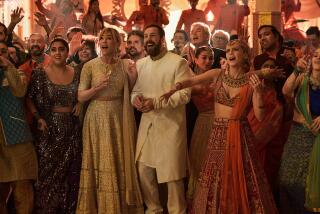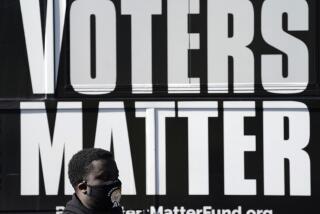BLACK VIEWER REPORT SPURS TV TALK
Black viewership will play an increasingly important role in prime-time TV programming and already may mean the difference between life and death for some shows, according to a report from a New York advertising agency.
The report from Batten, Burton, Durstine & Osborn (BBDO), surveying black viewing habits from last October to January, concluded that if non-blacks continue turning to cable and videocassettes while blacks stay with network television, blacks will jump from their present 14% to 20% of the prime-time audience in five years.
Thus ânetwork television will become increasingly influenced by the tastes and preferences of blacks,â the report said.
Doug Alligood, BBDOâs vice president of special markets, explained that blacks spend more time watching network TV than non-blacks because they tend to have less discretionary money for cable and videocassettes. The report also noted that cable still is generally unavailable in cities with heavy black populations.
Already, the report said, certain shows are being kept alive by the ratings that black viewers represent.
âBlacks do not necessarily make a show a hit,â Alligood said, but âreceptivity by black viewers can mean the difference between success and failure for those shows having marginal ratings.â
He cited NBCâs âStingrayâ and âCrime Storyâ and CBSâ âThe Equalizerâ as examples.
During the time period surveyed, A.C. Nielsen ratings ranked those series 30th, 39th and 42nd, respectively, among non-blacks, but they were ninth, 11th and 12th among blacks, according to the report.
âIt has been my experience that blacks tend to watch high-action dramas, adventures, soap operas and (shows) that feature . . . a man or a woman of action or a rebel,â said Alligood.
Arnold Becker, vice president of national TV research for CBS, disagreed with some of the reportâs findings, contending that the black audienceâs programming taste is neither uniform enough nor different enough from non-blacks to have a major impact.
âWhen weâre making a decision about who is going to stay on the air and who isnât, we arenât fooling around with a 10th of a share,â he said. âIt just doesnât make a whole hell of a lot of difference.
âBy and large, the black population (black viewers) would have to have a significant amount of different viewing habits from the rest of the population to make a difference in the (national) ratings,â Becker said.
A showâs survival isnât based only on ratings, Becker said. Sometimes shows with marginal numbers stay on because no adequate replacement is available, he said.
Nonetheless, Alligood said that the BBDO report contains âtwo important lessons.â
One alerts advertising agencies to âcrossover showsâ that may meet certain advertisersâ needs because they reach a large number of blacks and a significant number of non-blacks. The second is for networks in alerting them to the growing impact of the black audience.
âNobody in this business can afford to ignore 20% of their audience,â Alligood said.
More to Read
The complete guide to home viewing
Get Screen Gab for everything about the TV shows and streaming movies everyoneâs talking about.
You may occasionally receive promotional content from the Los Angeles Times.






